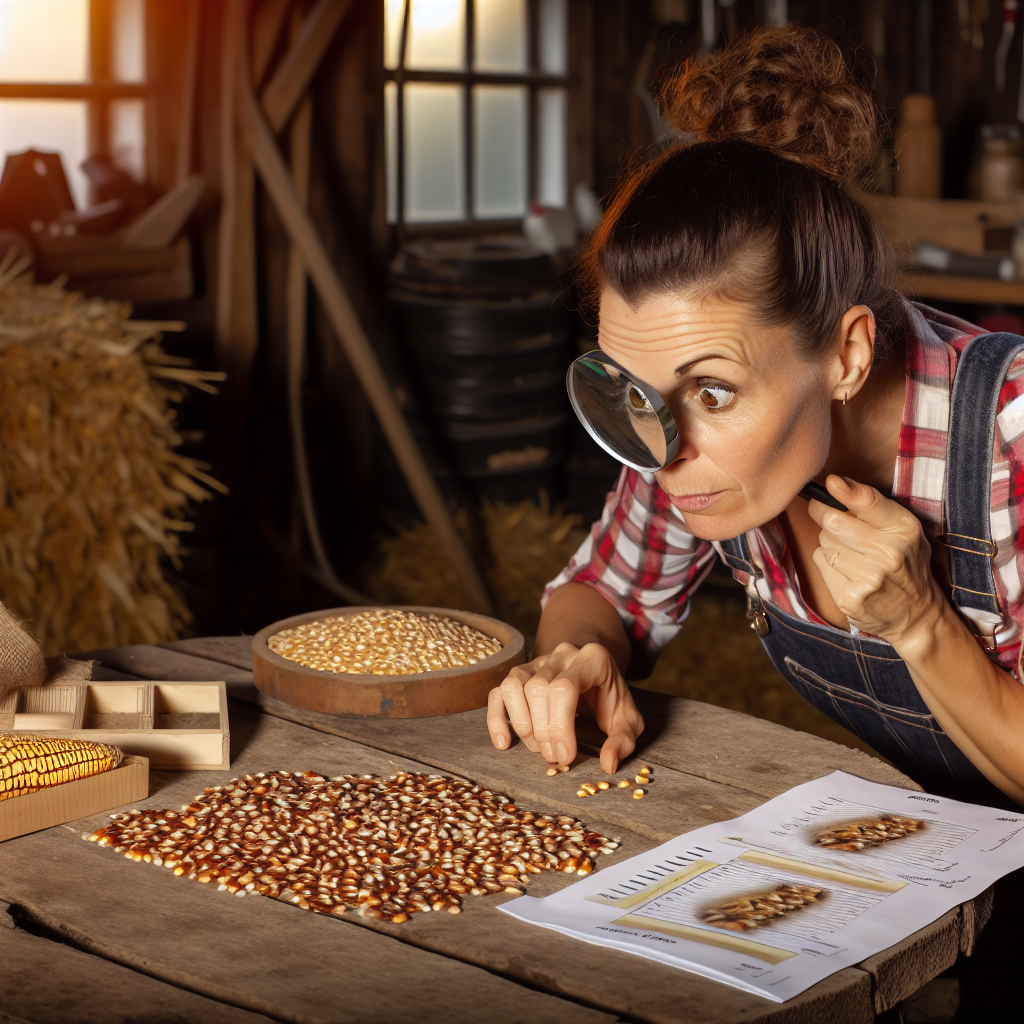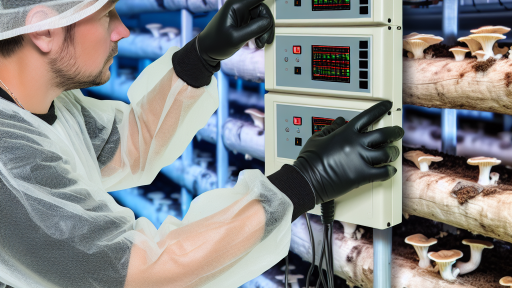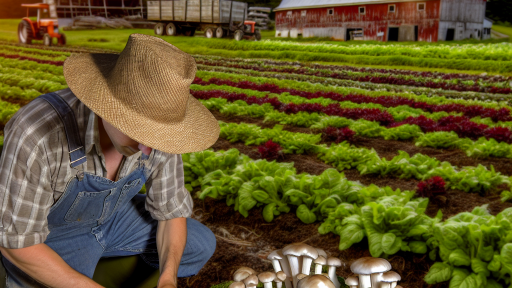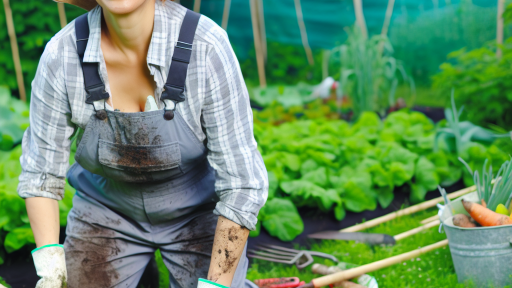Understanding Seed Germination
Significance for Farmers
Seed germination represents a crucial phase for farmers.
It significantly affects crop yields and overall productivity.
Understanding this process can lead to optimized planting strategies.
Farmers benefit from knowing how to maximize germination rates.
Successful germination sets the foundation for robust crops.
The Germination Process
Germination involves several biological processes.
First, seeds absorb water, triggering enzyme activity.
This allows for the breakdown of stored nutrients.
Next, the seed coat softens, enabling sprouting.
Ultimately, a new plant emerges from the soil.
Factors Influencing Germination
Multiple factors influence seed germination rates.
- Temperature plays a vital role in seed viability.
- Moisture levels must remain adequate for optimal growth.
- Soil quality impacts nutrient availability and drainage.
- Light exposure can also affect germination success.
Common Challenges
Farmers often face challenges during germination.
Soil diseases can hinder seed success rates.
Pests may pose threats to young seedlings as well.
Additionally, adverse weather conditions can affect outcomes.
Transform Your Agribusiness
Unlock your farm's potential with expert advice tailored to your needs. Get actionable steps that drive real results.
Get StartedImproving Germination Rates
Farmers can adopt various strategies to improve germination.
Choosing high-quality seeds is crucial for success.
Implementing proper soil preparation enhances nutrient availability.
Using techniques like seed priming can boost emergence speed.
Regular monitoring helps track and adjust growth conditions.
The Germination Process: Key Stages Explained
Imbibition
Imbibition marks the initial stage of germination.
During this stage, seeds absorb water rapidly.
This process causes seeds to swell and soften.
Moreover, imbibition activates enzymes within the seed.
Activation of Metabolism
The activation of metabolism follows imbibition.
Seeds begin respiration and utilize stored energy.
This energy fuels growth and development.
Essentially, the seed prepares for growth.
Radical Emergence
Radical emergence is a significant milestone in germination.
Dormant seeds push through the soil to grow.
Roots are the first structures to emerge.
This initial growth anchors the plant in place.
Shoot Development
Shoot development occurs after radical emergence.
The shoot pushes upward towards sunlight.
This process helps in photosynthesis initiation.
As the shoot grows, leaves begin to unfold.
Post-Germination Growth
After sprouting, the plant enters a growth phase.
This stage focuses on establishing strong roots.
Additionally, it enhances leaf production for photosynthesis.
Showcase Your Farming Business
Publish your professional farming services profile on our blog for a one-time fee of $200 and reach a dedicated audience of farmers and agribusiness owners.
Publish Your ProfileHealthy growth leads to overall plant vitality.
Factors Affecting Seed Germination
Water
Water is crucial for seed germination.
It activates enzymes that stimulate growth.
Without sufficient moisture, seeds remain dormant.
Excess water can also hinder germination.
It may lead to rot and fungal infections.
Farmers should monitor soil moisture levels closely.
Temperature
Temperature significantly influences seed germination rates.
Most seeds prefer a specific temperature range.
Warm temperatures often accelerate growth.
Cold temperatures can delay the process.
Farmers need to consider local climate conditions.
Using mulch can help regulate soil temperature.
Oxygen
Oxygen is essential for seed metabolism.
Seeds require it to initiate growth processes.
Poor soil aeration can limit oxygen availability.
Farmers should ensure proper soil structure.
Good drainage prevents waterlogging, ensuring oxygen access.
Using cover crops can improve soil aeration naturally.
You Might Also Like: Common Mushroom Farming Challenges and Solutions
Seed Dormancy: Causes and Overcoming Techniques
Understanding Seed Dormancy
Seed dormancy prevents seeds from germinating immediately after maturity.
This mechanism helps seeds survive unfavorable conditions.
It ensures seeds germinate during optimal times for growth.
Various environmental factors influence dormancy, including temperature and moisture.
Causes of Seed Dormancy
Seed dormancy can arise from several factors.
First, physical dormancy occurs when hard seed coats prevent water absorption.
Next, physiological dormancy involves internal chemical processes inhibiting germination.
Lastly, biochemical dormancy results from factors affecting seed viability.
Overcoming Seed Dormancy Techniques
Farmers can employ various techniques to break seed dormancy.
Scarification involves physically altering the seed coat.
Soaking seeds in water can also aid in germination.
Chemical treatments with growth regulators may enhance seed viability.
Stratification requires a period of cold temperatures to simulate winter conditions.
Best Practices for Managing Dormant Seeds
- Test seed viability regularly for optimal planting decisions.
- Use proper storage methods to maintain seed quality.
- Familiarize yourself with specific dormancy behaviors of various seed types.
Implementing these practices helps improve germination rates for farmers.
Delve into the Subject: Tips For Successful Vegetable Seed Saving
Best Practices for Preparing Seeds for Germination
Selecting Quality Seeds
Begin with selecting high-quality seeds for optimal germination.
Consider using seeds from reputable suppliers.
Inspect seeds for damage or signs of disease.
Additionally, choose seeds that are suited to your climate.
Pre-soaking Seeds
Pre-soaking seeds can enhance germination rates.
Showcase Your Farming Business
Publish your professional farming services profile on our blog for a one-time fee of $200 and reach a dedicated audience of farmers and agribusiness owners.
Publish Your ProfileStart by soaking them in warm water for several hours.
This process helps to soften the seed coating.
Consequently, it can speed up the germination process.
Temperature Regulation
Monitor temperature during the germination process.
Different seeds require different temperature ranges.
Maintain a consistent environment to prevent stress.
As a result, you’ll achieve better germination rates.
Using Growing Mediums
Choosing the right growing medium is crucial.
Consider using sterile seed-starting mixes.
These mixes provide good drainage and aeration.
Additionally, they help retain moisture without becoming soggy.
Watering Techniques
Implement proper watering techniques for germination.
Keep the medium consistently moist, but not oversaturated.
Use a spray bottle to prevent displacing the seeds.
Furthermore, check moisture levels daily for best results.
Providing Adequate Light
Ensure seeds receive adequate light for healthy growth.
Grow lights can be utilized during germination indoors.
Natural sunlight is beneficial, but avoid direct exposure.
In addition, light promotes strong, healthy seedlings.
Pest Management
Be proactive about pest management during germination.
Check seedlings regularly for signs of pests or diseases.
Implement organic pest control methods when necessary.
This will protect your young plants and promote healthy growth.
Gain More Insights: Sustainable Water Practices in Organic Farming
Common Challenges in Seed Germination and Solutions
Environmental Factors
Temperature plays a crucial role in seed germination.
Many seeds prefer a specific temperature range for optimal growth.
Inadequate or excessive moisture can hinder the germination process.
To combat this, maintain consistent soil moisture levels.
Pest and Disease Issues
Pests can damage seeds before they germinate.
Common pests include rodents and insects that feed on seeds.
Implementing pest control measures can help mitigate this problem.
Furthermore, diseases can negatively impact seed viability.
Using disease-resistant seed varieties can reduce these risks.
Seed Quality
The quality of seeds directly affects germination rates.
Old or poorly stored seeds may not germinate effectively.
Conducting germination tests before planting ensures seed viability.
Additionally, source seeds from reputable suppliers to guarantee quality.
Soil Conditions
Soil composition also impacts seed germination.
Poor soil structure can restrict root development.
Test the soil for pH and nutrient levels regularly.
Showcase Your Farming Business
Publish your professional farming services profile on our blog for a one-time fee of $200 and reach a dedicated audience of farmers and agribusiness owners.
Publish Your ProfileAmending soil with organic matter can improve its structure and fertility.
Techniques to Enhance Germination
Scarification can help tough seeds break dormancy.
Soaking seeds in water before planting can also boost germination rates.
Employing a seedling heat mat can provide consistent warmth.
Lastly, practice proper planting depth for different seed types.
Gain More Insights: Benefits Of Seed Saving For Sustainable Agriculture

Understanding Seed Viability and Germination Rates
Defining Seed Viability
Seed viability refers to the ability of a seed to germinate successfully.
This potential is crucial for farmers when planning their crops.
To assess viability, conduct a germination test on a sample batch.
Simply moisten a paper towel, place seeds on it, and monitor growth.
Factors Affecting Seed Germination
Multiple factors influence seed germination rates.
Temperature plays a significant role in the germination process.
Seeds require an optimal temperature for successful sprouting.
Moisture is equally important; seeds must absorb water to trigger germination.
Furthermore, light conditions can impact certain seed types.
Some seeds germinate better in darkness, while others flourish in light.
Understanding Germination Rates
Germination rates indicate the percentage of seeds that sprout in favorable conditions.
Farmers calculate these rates to estimate potential crop yield.
High germination rates suggest healthy seeds and successful planting.
Conversely, low rates may indicate problems with seed quality or storage.
Improving Seed Germination Rates
Farmers can employ various methods to enhance germination rates.
First, choose high-quality seeds that meet industry standards.
Second, store seeds properly to maintain their viability over time.
Additionally, pre-soaking seeds can accelerate the germination process.
Finally, consider using seed treatments to protect against diseases.
Monitoring and Adjustment
Regularly monitor germination performance during planting seasons.
Adjust environmental conditions according to specific crop needs.
For example, control temperature and moisture levels effectively.
Maintaining ideal conditions will maximize success rates for farmers.
Utilizing Technology in Monitoring Seed Germination
The Role of Technology in Agriculture
Technology plays a crucial role in modern agriculture.
It enhances efficiency and productivity for farmers.
Farmers increasingly rely on data to make informed decisions.
For instance, remote sensing technologies provide valuable insights.
These technologies help farmers understand their fields better.
Monitoring Seed Germination
Monitoring seed germination is vital for successful crop production.
Technological tools offer real-time data about seed performance.
Drones and satellite imagery are popular options.
These tools allow farmers to identify issues early.
Using Soil Sensors
Soil sensors provide critical information about moisture levels.
They help determine the right time for seed planting.
Showcase Your Farming Business
Publish your professional farming services profile on our blog for a one-time fee of $200 and reach a dedicated audience of farmers and agribusiness owners.
Publish Your ProfileFarmers can optimize watering based on soil conditions.
Ultimately, this enhances germination rates.
Data Analytics in Agriculture
Data analytics helps farmers interpret the data collected.
It supports predictive modeling of germination outcomes.
Farmers can assess which varieties perform best under specific conditions.
This analysis leads to more strategic planting decisions.
Mobile Applications for Farmers
Mobile applications simplify monitoring tasks for farmers.
They can easily record germination rates on their smartphones.
Additionally, apps provide access to expert advice in real-time.
Thus, farmers can address issues promptly.
Benefits of Technological Integration
Integrating technology streamlines farming operations.
It reduces the risk of crop failure due to poor germination.
Moreover, it enhances overall farm productivity and sustainability.
Farmers can make more informed decisions, leading to better outcomes.
Case Studies: Successful Germination Techniques from Around the World
Innovative Techniques in Japan
Japanese farmers employ a unique method called “paddy germination.”
This technique involves soaking seeds in water before planting.
It promotes quicker sprouting and improved germination rates.
Farmers report increased yields due to this careful preparation.
Eco-Friendly Practices in India
In India, the use of traditional seed beds has become popular.
Farmers create elevated beds that enhance drainage and airflow.
This practice reduces seed rot and encourages healthier growth.
Many locals swear by this method for cultivating rice.
Advanced Technology in the United States
Farmers in the United States often use hydroponic systems for germination.
This method allows them to control environmental conditions precisely.
As a result, seed germination becomes more consistent and faster.
Additionally, this technique conserves water and maximizes space.
Community Approaches in Sub-Saharan Africa
In various Sub-Saharan African communities, farmers collaborate frequently.
They share knowledge on seed treatments to promote better germination.
Some farmers apply natural fertilizers, enhancing soil health.
Thus, they witness significant progress in crop production.
Lessons from Europe
European farmers focus heavily on seed diversity.
They understand the importance of local seed varieties for robust growth.
Through this approach, farmers increase resilience to climate changes.
This strategy also fosters sustainable agricultural practices.
Additional Resources
Micro Farming: Growing Wheat in Your Backyard : 4 Steps (with …
What is Syntropic Farming?: A Permaculture Perspective — Porvenir …




